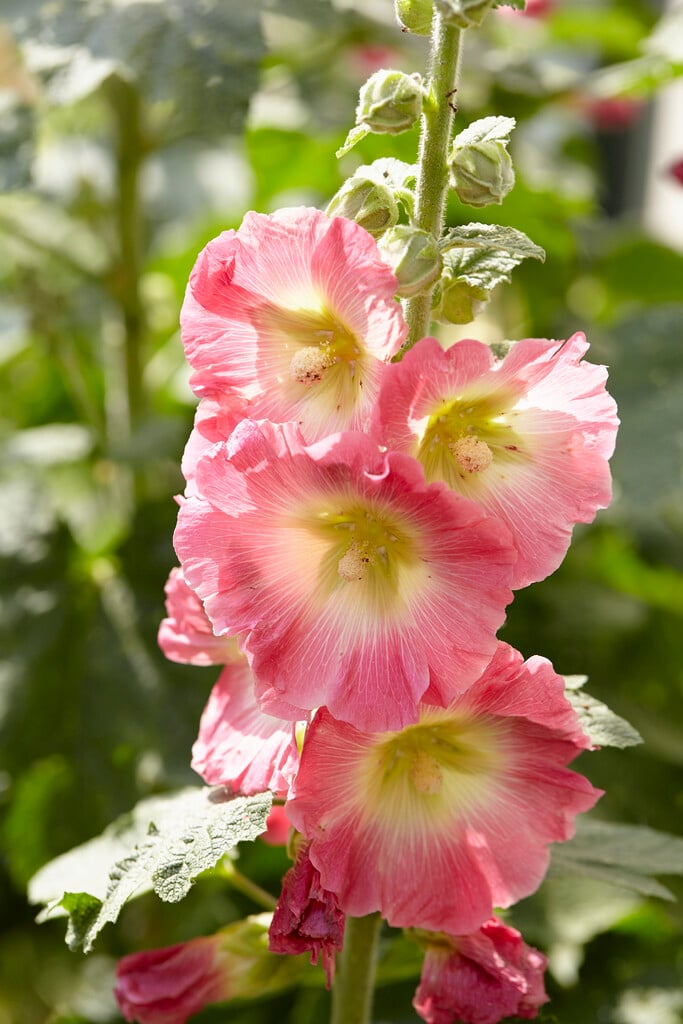Alcea rosea
hollyhock
A robust biennial or short-lived perennial to 2m or more, with shallowly lobed, rounded leaves and long erect racemes of open funnel-shaped flowers to 10cm across, which may be pink, purple, red, white or yellow
Size
Ultimate height
1.5–2.5 metresTime to ultimate height
2–5 yearsUltimate spread
0.5–1 metresGrowing conditions
Moisture
Well–drainedpH
Acid, Alkaline, NeutralColour & scent
| Stem | Flower | Foliage | Fruit | |
| Spring | Green | |||
|---|---|---|---|---|
| Summer | Pink Purple Red White Yellow | Green | ||
| Autumn | Green | |||
| Winter |
Position
- Full sun
Aspect
South–facing or West–facing
Exposure
Exposed or Sheltered Hardiness
H5Botanical details
- Family
- Malvaceae
- Native to GB / Ireland
- No
- Foliage
- Deciduous
- Habit
- Columnar upright
- Genus
Alcea are robust biennials or short-lived perennials with showy funnel-shaped flowers borne in tall, erect racemes in summer
- Name status
Correct
How to grow
Cultivation
Thrives in well-drained, moderately fertile soil in full sun. May need support on exposed sites, see staking: perennials
Propagation
Propagate by seed sown in gentle heat in mid-winter or in-situ in spring
Suggested planting locations and garden types
- Cottage and informal garden
- Coastal
- Flower borders and beds
- Wall side borders
Pruning
Cut back dead foliage after flowering, or pull out and discard - growing as annuals or biennials can help limit the spread of rust
Pests
May be susceptible to cutworms and slugs on young growth, and to capsid bugs, aphids and mallow flea beetles
Diseases
May be susceptible to hollyhock rust
Get involved
The Royal Horticultural Society is the UK’s leading gardening charity. We aim to enrich everyone’s life through plants, and make the UK a greener and more beautiful place.

